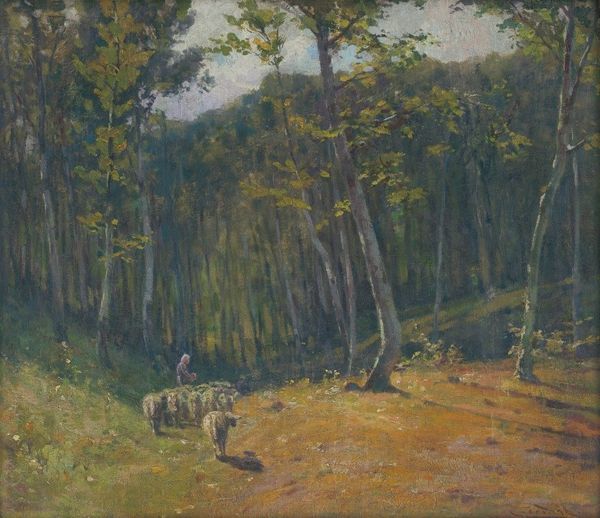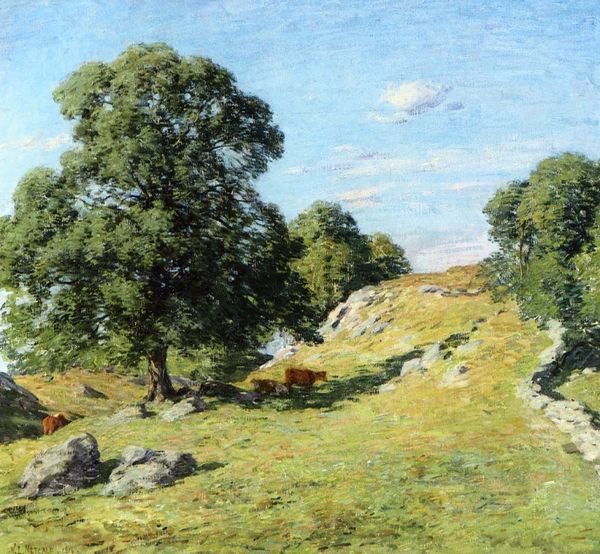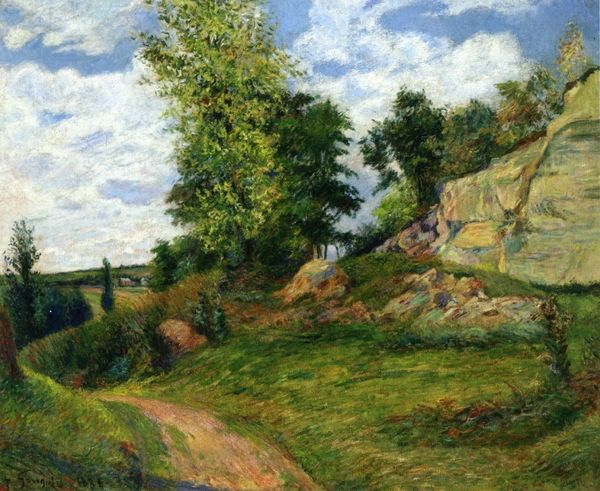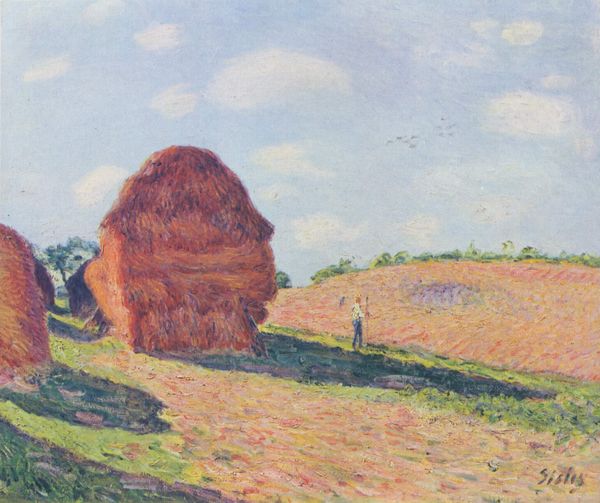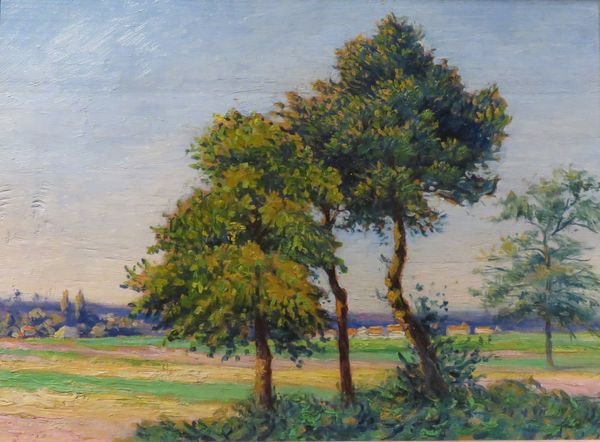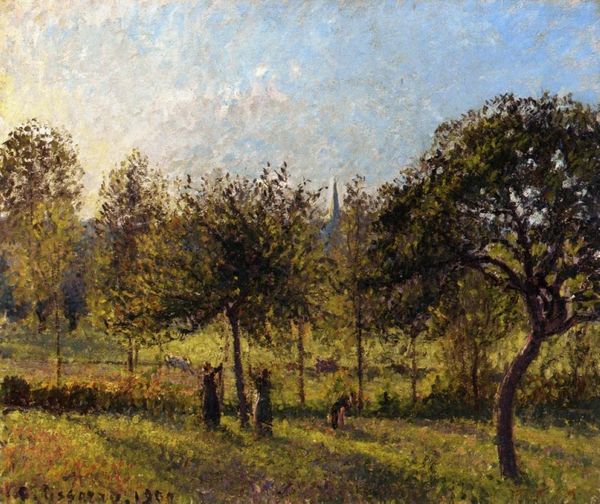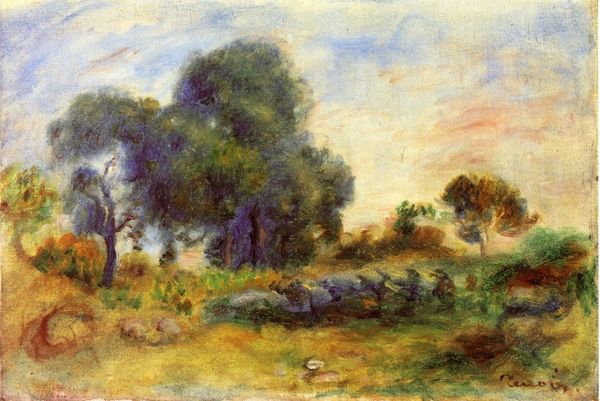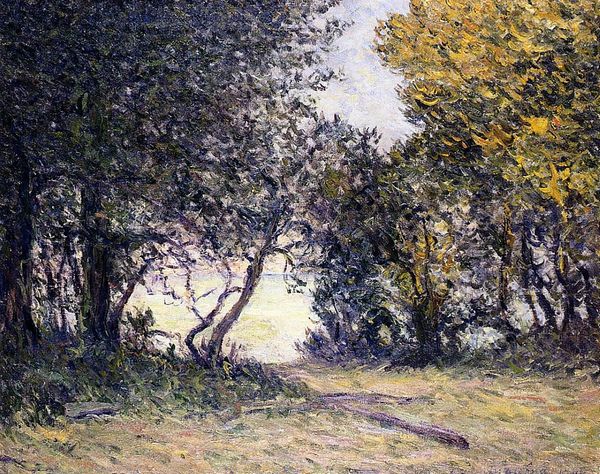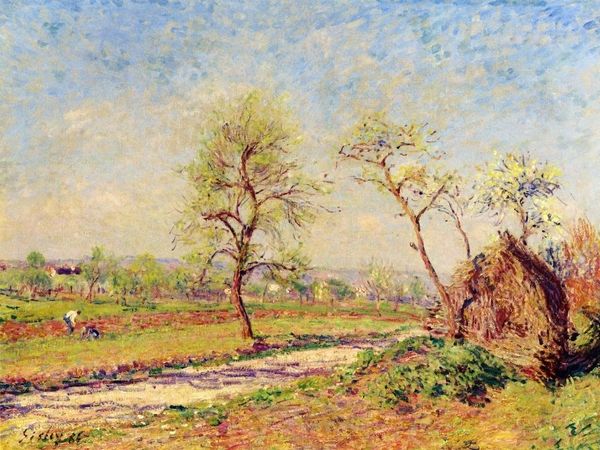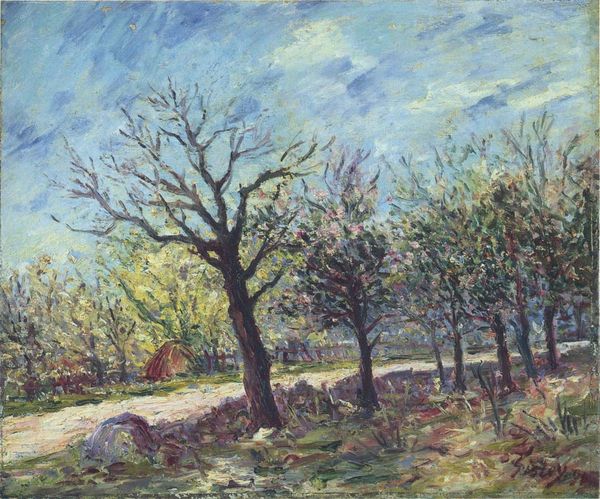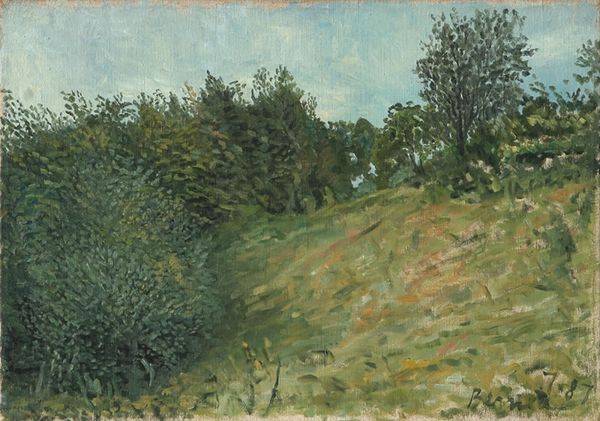
plein-air, oil-paint, impasto, pastel
#
impressionism
#
plein-air
#
oil-paint
#
landscape
#
impressionist landscape
#
nature
#
impasto
#
forest
#
pastel
Dimensions: 54 x 73 cm
Copyright: Public domain
Curator: Here we have Alfred Sisley’s "The Edge of the Forest," created in 1886, rendered with oil paint in what one might call a rather idyllic, open-air setting. Editor: It feels light, almost breezy. The brushstrokes give the impression of movement, of leaves rustling and grass swaying. I am instantly relaxed and at peace! Curator: Indeed. The composition certainly lends itself to that feeling. Notice how Sisley uses relatively short, broken brushstrokes to capture the fleeting effects of light on the foliage. It exemplifies Impressionist techniques, really breaking down form into chromatic elements. Editor: It seems a straightforward slice of rural life, yet something holds my eye – the hay bale stands out like a geometric block. How would you read its impact on the scene’s structure? Curator: It's not accidental. The dark mass provides contrast and serves a crucial structuring purpose against the diffuse light. Sisley employed several compositional structures during this stage, frequently offsetting masses within generally accepted “perfect” landscapes. Editor: That is true, though I cannot escape thinking how land management shaped leisure, how industrial work moved outwards to the forests… what kind of labor relations are implicit here? The person walking into frame is the labor? What are their wages, their hours, their living situation? Curator: While social issues certainly impact interpretation, the piece's value exists in its manipulation of formal pictorial values; color, light, texture – a self-reflexive focus on painting as painting, not merely representation. Editor: Fair enough. However, even formal elements cannot escape cultural association. We, viewers, approach them loaded with context. Ultimately, this intersection, however fraught, creates rich understanding. Curator: A dialectical impasse! However, looking again, the painting does resolve some contradictions within itself – and certainly leaves a lingering image, which in itself suggests certain aesthetic and philosophical closures. Editor: Agreed, and those closures open up interesting new questions. Thank you for sharing that perspective.
Comments
No comments
Be the first to comment and join the conversation on the ultimate creative platform.
